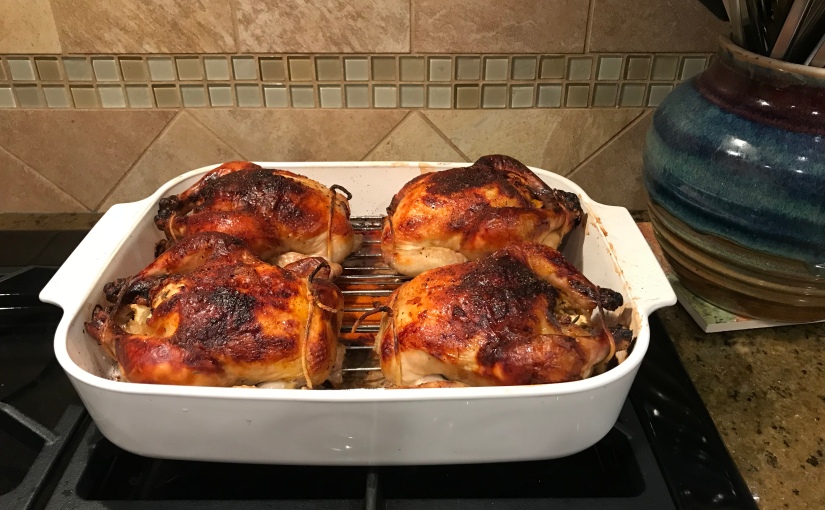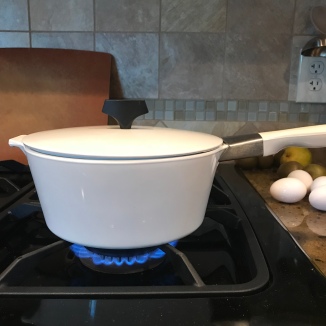Cornish game hens are a great way to make a special meal out of what is essentially just ordinary chicken. There’s something festive about having your own tiny roast bird on your plate; it’s one of my favorite things to make for Christmas dinner.
Brining in buttermilk overnight helps make the hens extra tender and juicy, and also makes the roasting process more forgiving — it’s hard to go wrong! The only problem I’ve ever run into is overcrowding in the oven. I once tried to roast 12 hens at once (two sheet pans with six hens each, on two oven racks) for a big family gathering, and while they tasted great they never got the deep golden color that makes the dish so appealing.
Adapted from Kitchen Confidante’s Buttermilk Brined Cornish Hens.
Serves 4-8 (1 hen per person, or half for a more modest portion size)
Ingredients
4 Cornish game hens, rinsed and patted dry
6 cups buttermilk
1 tbsp salt
2 tsp cayenne
2 tsp garlic powder
2 tsp dried thyme
juice of 1 lemon
1 lemon, cut in quarters
4 cloves garlic
4 sprigs fresh rosemary
olive oil
kosher salt
freshly ground pepper
paprika (sweet)
In a large bowl or pot, combine the buttermilk, salt, cayenne, garlic powder, thyme and lemon juice. Place the hens in the brine, making sure they are mostly submerged. Cover and refrigerate overnight.
Take the bowl out of the refrigerator and let sit at room temperature for about 30 minutes. Preheat the oven to 425 degrees and adjust a rack to the lower-middle position.
Remove the hens from the brine and pat dry. Place a lemon quarter, garlic clove and rosemary sprig in each cavity. Truss the hens with cooking twine (I did a variation of the technique in this video; give yourself at least 2 feet of twine to work with for each hen).
Place the hens on a rack in a roasting pan or sheet pan. Rub the skins with olive oil and sprinkle with salt, pepper and paprika. Roast until the hens are a deep golden brown and the internal temperature reaches 180 degrees, about 1 hour.
Pictured: Corning Ware White A-21-B-N Open Roaster






